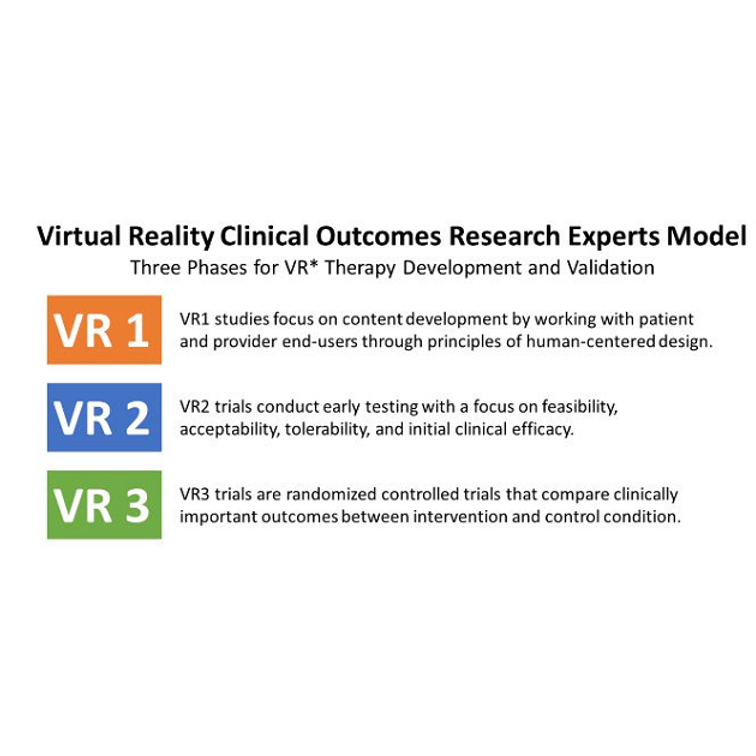How do we advance the science of therapeutic VR? New guidelines offer blueprint

As the use of therapeutic VR expands, it is essential that guidelines are established to ensure scientific rigor in the development and evaluation of VR applications, similar to established standards for drug therapies. VR developers would benefit from systematic guidance on best practices for designing and conducting VR clinical trials. To fulfill this unmet need, our VR research team garnered input from an international working group, called the Virtual Reality Clinical Outcomes Research Experts (VR-CORE) committee, to develop guidance around VR trials. VR-CORE developed new checklists for how best to perform VR clinical research and created a framework similar to the FDA Phase I-III framework, but modified for VR. The guidelines suggest three type of VR trials, called VR1, VR2, and VR3. VR1 studies focus on content development by working with patients and providers through the principles of human-centered design. VR2 trials conduct early testing with a focus on feasibility, acceptability, tolerability, and initial clinical efficacy. VR3 trials are randomized, controlled studies that evaluate efficacy against a control condition.
January 31, 2019



